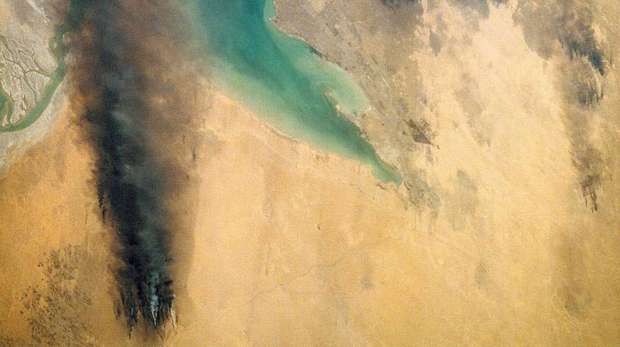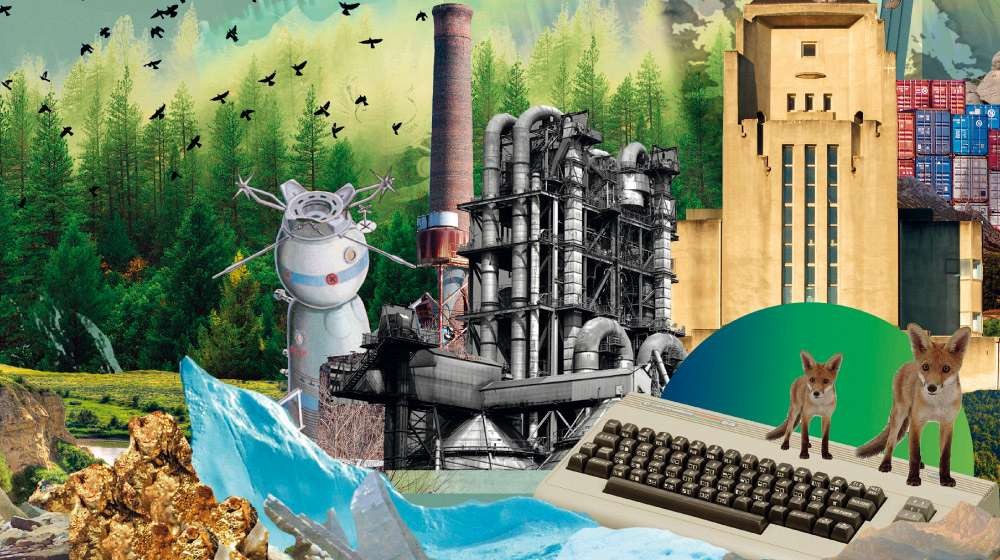After the End of the World
Climate Change
24 Oct 2017 - 29 Apr 2018
AFTER THE END OF THE WORLD
24 October 2017 - 29 April 2018
Curator: José Luis de Vicente
“After the End of the World” is an exhibition about the planet of 2017, irreversibly transformed into an Anthropocene planet after two centuries of human intervention in natural systems. But it is also an exhibition about how we will reach the world of the latter half of the 21st century, and about our society’s responsibility to the generations who will be born and grow up in it. The show will take place between October 2017 and April 2018 (dates to be determined).
In December 2015, 195 countries all over the world adopted an agreement that, to some extent, means the end of our civilization as we know it. The Paris Climate Agreement, the last attempt on the part of global diplomacy to slow climate change, calls for the gradual disappearance of the use of fossil fuels and CO2 emissions as a way of avoiding a rise in average global temperature of more than two degrees. At some point in the second half of the 21st century, the use of coal, oil and gas, and their attendant pollution, will have to come to a halt, forever.
Whether or not the objectives of the Paris Agreement are met, the world between 2050 and 2100 will be very different to the world we were born and grew up in. To get there, we’ll have to give up the most important source of development and wealth in the history of humankind, which transformed a planet of 1,000 million inhabitants in 1850 to another of over 7,500 today. The transition will call for bigger efforts and sacrifices than simply replacing fossil fuels with renewable energies; it will mean rethinking the food chain, the design of cities and homes, transport, and the birth rate.
If the objectives of the Paris Agreement are not met, and the Earth in 2100 is three to four degrees hotter than today, the consequences will be dramatic, and the life of future generations will change drastically. Proliferation of forest fires, drought, hurricanes and other extreme climatic events. Deforestation, desertification and melting icecaps. Uncertainty of global food production and large-scale movement of climate refugees. Mass extinction of animal species, and the transformation of the planet’s very geography as islands and coastal cities struggle to survive in the face of the rising sea.
“After the End of the World” is an exhibition about the planet of 2017, irreversibly transformed into an Anthropocene planet after two centuries of human intervention in natural systems. But it is also an exhibition about how we will reach the world of the latter half of the 21st century, and about our society’s responsibility to the generations who will be born and grow up in it. The project brings together voices from the various disciplines of creation and thought; together, artists, filmmakers, novelists, playwrights, architects, designers and scientists will imagine scenes, stories and escape routes to the different possible worlds that we can build, according to the decisions we make in the coming years—decisions in which we are all much more than mere spectators.
Participation project: Josep Perelló
24 October 2017 - 29 April 2018
Curator: José Luis de Vicente
“After the End of the World” is an exhibition about the planet of 2017, irreversibly transformed into an Anthropocene planet after two centuries of human intervention in natural systems. But it is also an exhibition about how we will reach the world of the latter half of the 21st century, and about our society’s responsibility to the generations who will be born and grow up in it. The show will take place between October 2017 and April 2018 (dates to be determined).
In December 2015, 195 countries all over the world adopted an agreement that, to some extent, means the end of our civilization as we know it. The Paris Climate Agreement, the last attempt on the part of global diplomacy to slow climate change, calls for the gradual disappearance of the use of fossil fuels and CO2 emissions as a way of avoiding a rise in average global temperature of more than two degrees. At some point in the second half of the 21st century, the use of coal, oil and gas, and their attendant pollution, will have to come to a halt, forever.
Whether or not the objectives of the Paris Agreement are met, the world between 2050 and 2100 will be very different to the world we were born and grew up in. To get there, we’ll have to give up the most important source of development and wealth in the history of humankind, which transformed a planet of 1,000 million inhabitants in 1850 to another of over 7,500 today. The transition will call for bigger efforts and sacrifices than simply replacing fossil fuels with renewable energies; it will mean rethinking the food chain, the design of cities and homes, transport, and the birth rate.
If the objectives of the Paris Agreement are not met, and the Earth in 2100 is three to four degrees hotter than today, the consequences will be dramatic, and the life of future generations will change drastically. Proliferation of forest fires, drought, hurricanes and other extreme climatic events. Deforestation, desertification and melting icecaps. Uncertainty of global food production and large-scale movement of climate refugees. Mass extinction of animal species, and the transformation of the planet’s very geography as islands and coastal cities struggle to survive in the face of the rising sea.
“After the End of the World” is an exhibition about the planet of 2017, irreversibly transformed into an Anthropocene planet after two centuries of human intervention in natural systems. But it is also an exhibition about how we will reach the world of the latter half of the 21st century, and about our society’s responsibility to the generations who will be born and grow up in it. The project brings together voices from the various disciplines of creation and thought; together, artists, filmmakers, novelists, playwrights, architects, designers and scientists will imagine scenes, stories and escape routes to the different possible worlds that we can build, according to the decisions we make in the coming years—decisions in which we are all much more than mere spectators.
Participation project: Josep Perelló


